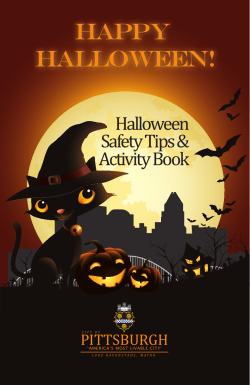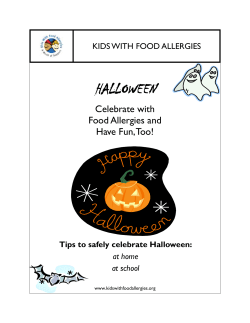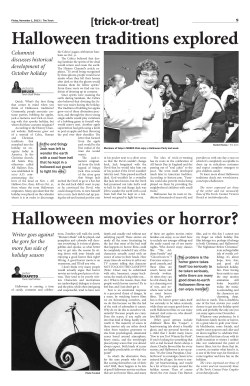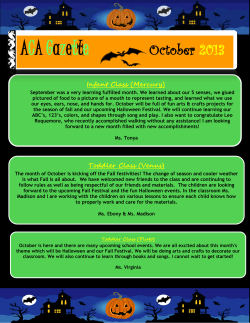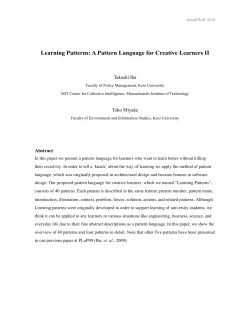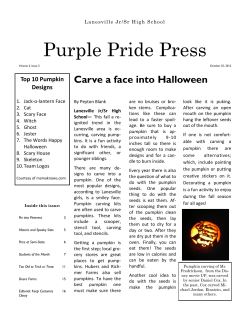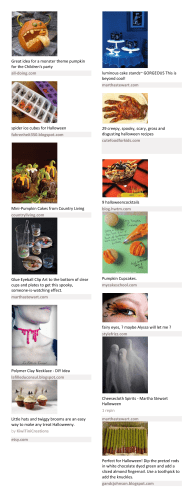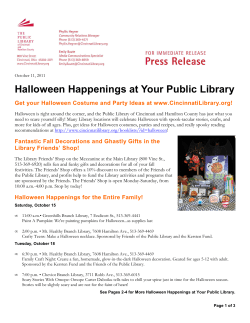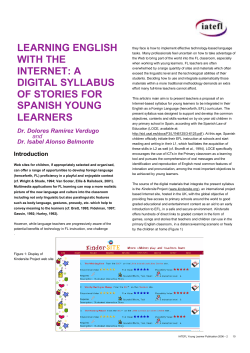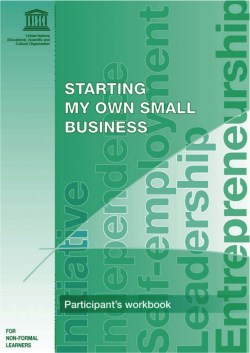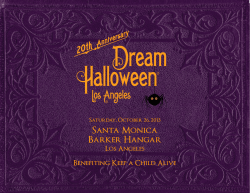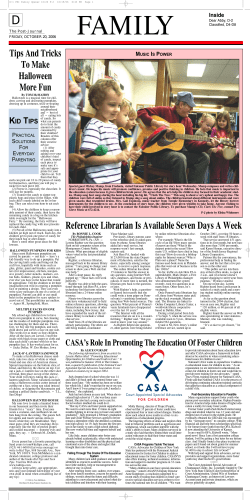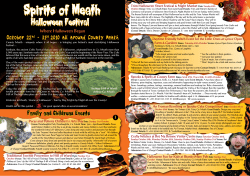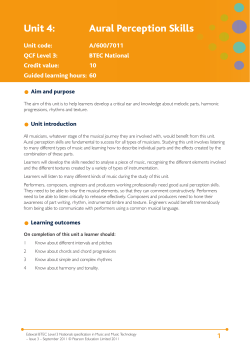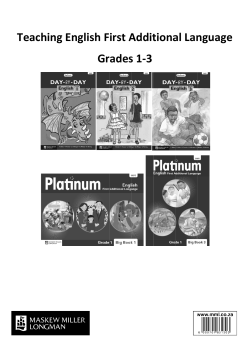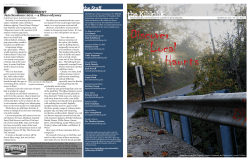
LearnEnglish Kids Halloween Tips
http://www.britishcouncil.org/learnenglish LearnEnglish Kids Halloween Tips There are lots of activities for Halloween on LearnEnglish Kids which you can use with your child or students to mark the occasion. They range from a song about a Scary Skeleton to a story about a Haunted House, from a Halloween facts quiz to a selection of terrific games and activities to do! Whether you are a parent or a teacher, there are many ways of exploiting these activities to help children practise their English. http://www.britishcouncil.org/learnenglish/kids-topics-halloween.htm Here are some ideas for using the Halloween activities on Learn English Kids: Halloween words: Match Halloween pictures and words. Tell your child/learners they’re going to play a Halloween word game. Draw a spidergram and see if they can add a Halloween word or picture to each of the legs: witch ghost skeleton frog spider ‘Trick or Treat’ devil magic spell bat vampire owl cat Now play the Halloween words game and see if your child/learners can match the scary pictures with the words! How many of the words match your spidergram? As a follow-up activity, your child/learners could match the pictures and words in the printable worksheet Halloween words. Can they find all the words in the wordsearch, too? Quiz When is Halloween? Where did it originate? What’s a ‘treat’? If your child/learners are curious to know the answers to these questions, play this Halloween quiz with them! As a follow-up activity, they might like to try the ‘True or False’ printable worksheet The History of Halloween to check how much they know about Halloween! The Scary Skeleton: Song Tell your child/learners they’re going to listen to a song about a Scary Skeleton. Ask them what a skeleton is made of. Can they feel the bones in their hands, fingers, legs, feet? How many bones do they think they have in their bodies?! Take a guess! (Adults have approximately 206 bones, a baby has 270!) Now ask your child/learners to touch the different parts of the body in sequence with the words in the song: ‘Touch your head, shoulders, neck, eyes, mouth, nose, ears, body, legs, feet, toes, knees, fingers, hand.’ Demonstrate as you say the words, and then repeat with just the words to ensure that your child/learners recognise the different parts of the body. Play the song and ask your child/learners to touch the parts of the body when they hear them-you might have to play the song two or three times! You could now ask your child/learners to touch the different parts of the body out of sequence, or play ‘Simon says’, for example, “Simon says ‘Touch your feet!’” “Touch your nose!” Your child/learners must only do the action when the action is preceded by the words “Simon says”. Another follow-up activity might be to print off and complete The Skeleton worksheet by labelling the correct parts of the bony body! An alternative activity is to label the dinosaur on The Scary Skeleton worksheet and play the ‘Make a skeleton’ dice game. As a final activity your child/learners could draw and label their own picture. Depending on the age and height of your child/students, a life-size version can be great fun-just ask your child/students to lie down on 2 or 3 postersize paper and draw around them! © The British Council/ Spring Gardens 2005 The United Kingdom’s international organisation for educational opportunities and cultural relations. We are registered in England as a charity. http://www.britishcouncil.org/learnenglish LearnEnglish Kids Halloween Tips The Magic Spell: Story Generate interest in the story by asking child/learners questions about magic spells. For example, who makes magic spells? What do wizards and witches use spells for? What ingredients do they put into their pots and cauldrons? What do they say as they mix the ingredients? What do they think would happen if a spell went wrong? Can your child/ learners make a magic spell? Do they wish they didn’t have to go to school? After the story your child/learners could complete the printable The Magic Spell worksheet and draw and write recipes for the Teacher’s and the Witch’s Magic Spells! Younger learners will also enjoy Paint it! Can they help the witch make her magic spell? Can they paint the scary ingredients the correct colour? Read and listen to find out! Activities to print: Magic Spells Now it’s your child/learners’ chance to make their own spells and make their wishes come true! What do they wish they could do, or didn’t have to do? What will they put into their cauldron? A sweaty shoe? Some football stickers? All their school tests? The Haunted House: Story Before reading the story The Haunted House, you could introduce key lexis by asking your child/learners about their home. Can they name all of the rooms? What’s in the kitchen/ bathroom /study? Can your child/learners name all the rooms before the monkey gets squashed in the Haunted House game? Now read, listen and engage your child/learners in the pages of the story. Ask them, for example, who the 2 children are (your child/learners can give them names of their choice) or why Bob got a fright. What does thunder sound like? Are they frightened of thunder? Which room will the children go into first? What will they find? Which room will they go into next? Would they go inside a haunted house? Why/not? After the story, you could play a memory game with your child/learners, for example, ‘What was in the bathroom/ study?’ (an octopus/a cat), ‘Where was the octopus/cat?’ (in the bathroom/lab). They could then complete the printable worksheet The Haunted House, or read and draw the scary characters in the haunted house-Activities to print: Haunted Houses. Finally, take it in turns to play ‘I-Spy’. If there’s a table in the room, for instance, you could say, “I spy with my little eye something beginning with ‘t’”. Your child/learners now guess what you can see beginning with the letter ‘t’. Alternatively, play the online game Haunted House, Levels 1 and 2, and see what your child/ learners can spy in the haunted house! If your child/learners enjoyed this story, why not encourage them to make up a horror story of their own, with the help of Story Maker: http://www.britishcouncil.org/kids-writing-storymaker.htm A Howling Halloween: Story Before reading the story, brainstorm the topic of Halloween parties. Ask your child/learners if they’ve ever been to a Halloween party. Who/what did they dress up as? What did they wear? Did they look like the scary characters in the Halloween Costumes games? Tell them about a party you’ve been to and the costume you wore-can they guess which scary character you were?! Who would they like to dress up as this year? After reading the story your child/learners could do the printable A Howling House worksheet. Alternatively, if they enjoy project work, they could plan and prepare their own Halloween party! They might like to decorate their room with black and orange paper chains cut in the shape of bats and pumpkins, for example, or design their own personal party invitations. In Activities to print: Halloween Party they can find some great party ideas, from costume-making (how about a fancy dress show with a prize for the scariest costume?!), to Halloween games and recipes for party food and drinks! Why not let them create monstrous menus and make the food and drinks themselves?! Finally, don’t forget some ‘Trick-Treating’! A ketchup, pepper and yoghurt cocktail would make a terrible ‘trick’ for an unlucky victim, but a toffee apple-what a treat! Halloween party st October 31 10pm-late Bring a bat! © The British Council/ Spring Gardens 2005 The United Kingdom’s international organisation for educational opportunities and cultural relations. We are registered in England as a charity.
© Copyright 2025

